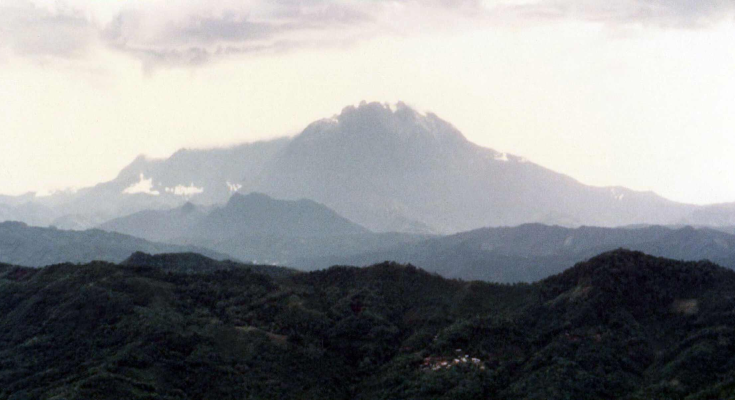Photo of Mount Kinabalu from Sabah Parks website
Amid the lush green landscape of Sabah, Borneo stands a majestic Mount Kinabalu that holds a strong cultural significance to the people of Sabah and holds the title of the highest peak in Southeast Asia at 4, 095 meters or 13, 435 feet. Many have attempted to climb this magnificent mountain to enjoy the breathtaking view of the mountaintop and immerse in its scenic beauty.
Beyond that beauty is the opportunity for climbers to challenge themselves mentally and physically with an experience unlike any other by climbing Mount Kinabalu via Ferrata. The thrill that comes with conquering the via Ferrata routes on Mount Kinabalu is unparalleled as it is also accompanied by hidden spectacular views that you cannot observe from a normal climbing route.
What Does Via Ferrata Mean?
Via Ferrata translates to “iron road” in Italian which describes something challenging and tests one’s endurance level. In the context of Mount Kinabalu Via Ferrata, it describes the different routes available on Mount Kinabalu, specifically on Mountain Torq, that climbers can take on if they wish to do other activities besides climbing.
Conquering via Ferrata routes means going through a trail on Mount Kinabalu that involves rails, cables and bridges embracing the rock face of the mountain. It is typically reserved for those who are experienced rock climbers and keen mountaineers as the challenges are more dire than normal mountain walking. Furthermore, climbers undertaking the via ferrata routes can also access scenic sections of the mountains that are not privy to other climbers. Climbers with above-average fitness levels who like challenging themselves would love the activities in the Ferrata adventure routes because they are bold and exciting.

Photo by Ling Tang on Unsplash
Mount Kinabalu Via Ferrata Adventure Routes
There are two types of routes available which are Walk The Torq and Low’s Peak Circuit. The Via Ferrata climbing experiences through these trails are life-changing and inspiring to many who have successfully trodden upon them. The next section of this article will tell you more about the Mount Kinabalu Via Ferrata adventure routes.
Walk The Torq VS. Low’s Peak Circuit
Both the routes available are accessible by beginner and intermediate climbers as the activities are designed to help those with little to no climbing experience access the rock faces. Beginner climbers can join the Walk The Torq route which only takes 2 to 3 hours while intermediate climbers can join the Low’s Peak Circuit route which takes 4 to 5 hours.
However, there are minimum requirements for first-time via ferrata climbers. Climbers must be 10 years old and above to qualify for the Walk The Torq route and 17 years old and above for the Low’s Peak Circuit. They must also have an average fitness level and be free of physical disabilities.
Having a fear of heights can prevent climbers from enjoying the activity but as long as they can manage their fear, it will be a good experience for them. Climbers do not need not need to have prior experience in mountaineering to tackle Via Ferrata and only a maximum of 6 climbers per group is allowed to do Via Ferrata at a time.
What is Mountain Torq?
Mountain Torq is known to be the first via ferrata in Asia located at the rock face of Mt Kinabalu, Sabah as well as the world’s highest via ferrata which beats the Marmolada West Ridge in the Italian Dolomites which holds the number two place. Mountain Torq starts at 3200 meters and ends at 3776 meters above sea level.
About Walk The Torq
Walk The Torq is a beginner-friendly Via Ferrata route that only lasts about 2 to 3 hours and has a view of broad and stunning landscapes of the scenic beauty of mountain vistas. The cut-off time for this route is at 7:15 am and the highest point is at 3 521 meters above sea level.
Walk the Torq has some of the safest mountaineering sports such as walking along a Monkey Bridge and climbing a Rogimut Ladder. The requirements for climbers undertaking this route are 10 years old and above and at least 130cm in height. There is also no pressure for climbers to have experience in mountaineering as the activities in Walk The Torq are considered a breeze.
About Low’s Peak Circuit
The Low’s Peak Circuit is slightly more challenging than Walk The Torq and designed for intermediate climbers with above-average fitness levels. However, this optional summit attempt is worth undertaking as brave climbers get to experience hidden gems of spectacular landscapes from the mountain’s breathtaking heights on the mountain plateau.
The activities in Low’s Peak Circuit take about 4 to 5 hours to complete and the cut-off time is at 6:30 am. The highest point is 3776 meters above sea level. The thrilling activities in this route include walking on the world’s highest Nepalese bridge at 3580 above sea level, walking on the suspension bridge which is a great photo opportunity amid scenic locations, and walking on a three-wire bridge which tests your balancing skills.
The minimum requirements for climbers to take part in this route are above 17 years old and at least 130 cm in height. Mountaineering experience is not necessary as long as you have an above-average fitness level.
Accommodation For Via Ferrata Climbers
Pendant Hut
Via Ferrata, climbers will typically be placed at the Pendant Hut and will be provided with an early or packed breakfast. The Pendant Hut is located in Kinabalu Park itself on the Panalaban rock slab which is convenient for the early morning journey to the mountain summit.
The Pendant Hut is a dormitory-style accommodation for both male and female climbers. The private room can only fit 4 people and requires an extra charge. Climbers will also share a communal bathroom with heated showers and be provided with sleeping bags and pillows.
At Pendant Hut, you can have a comfortable rest in the lounge area or visit the mini alpine library for a good read. There are also board games available for entertainment. For dinner, you will need to take a short walk to Laban Rata Restaurant.
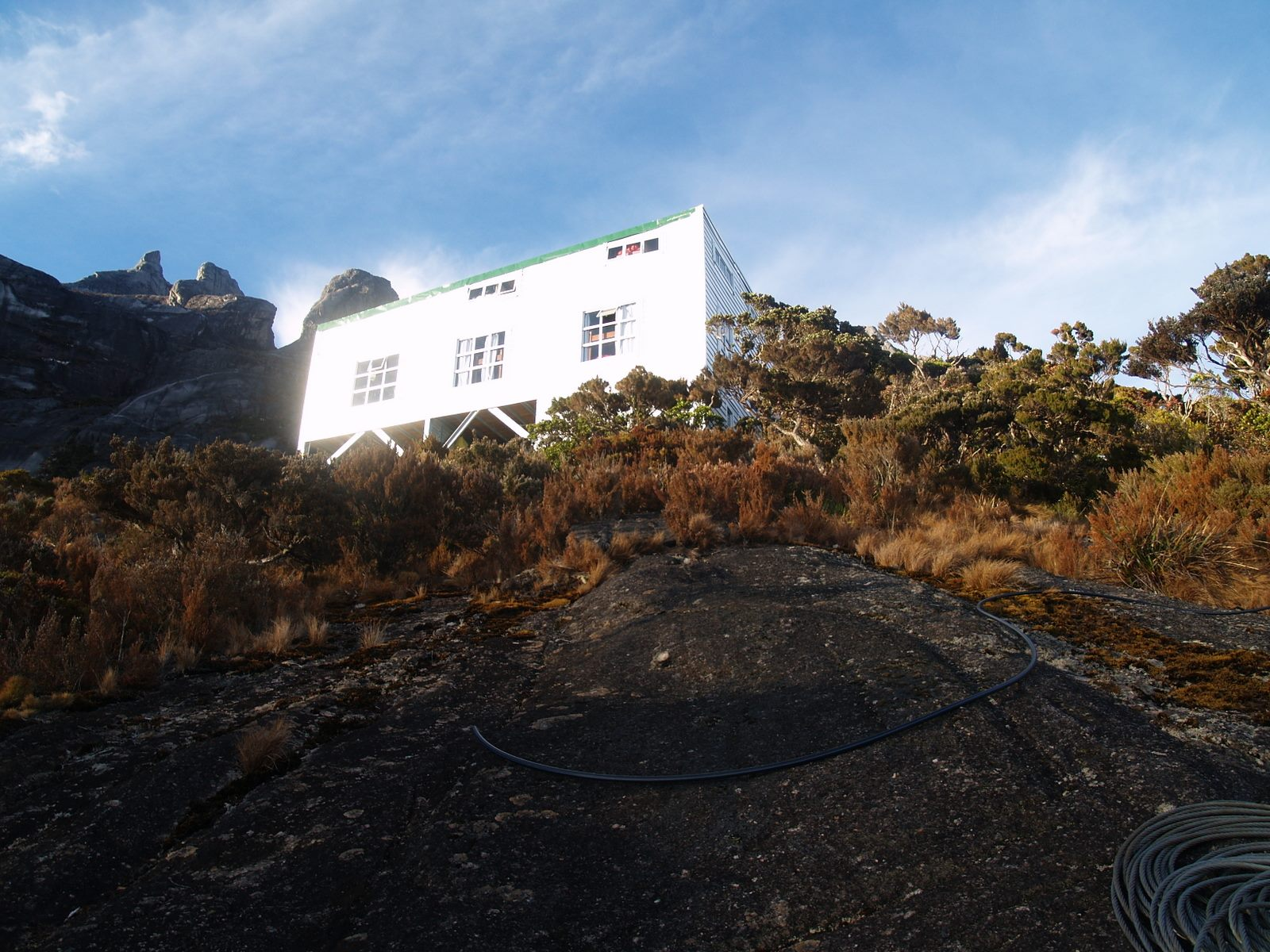
Photo of Pendant Hut from Facebook
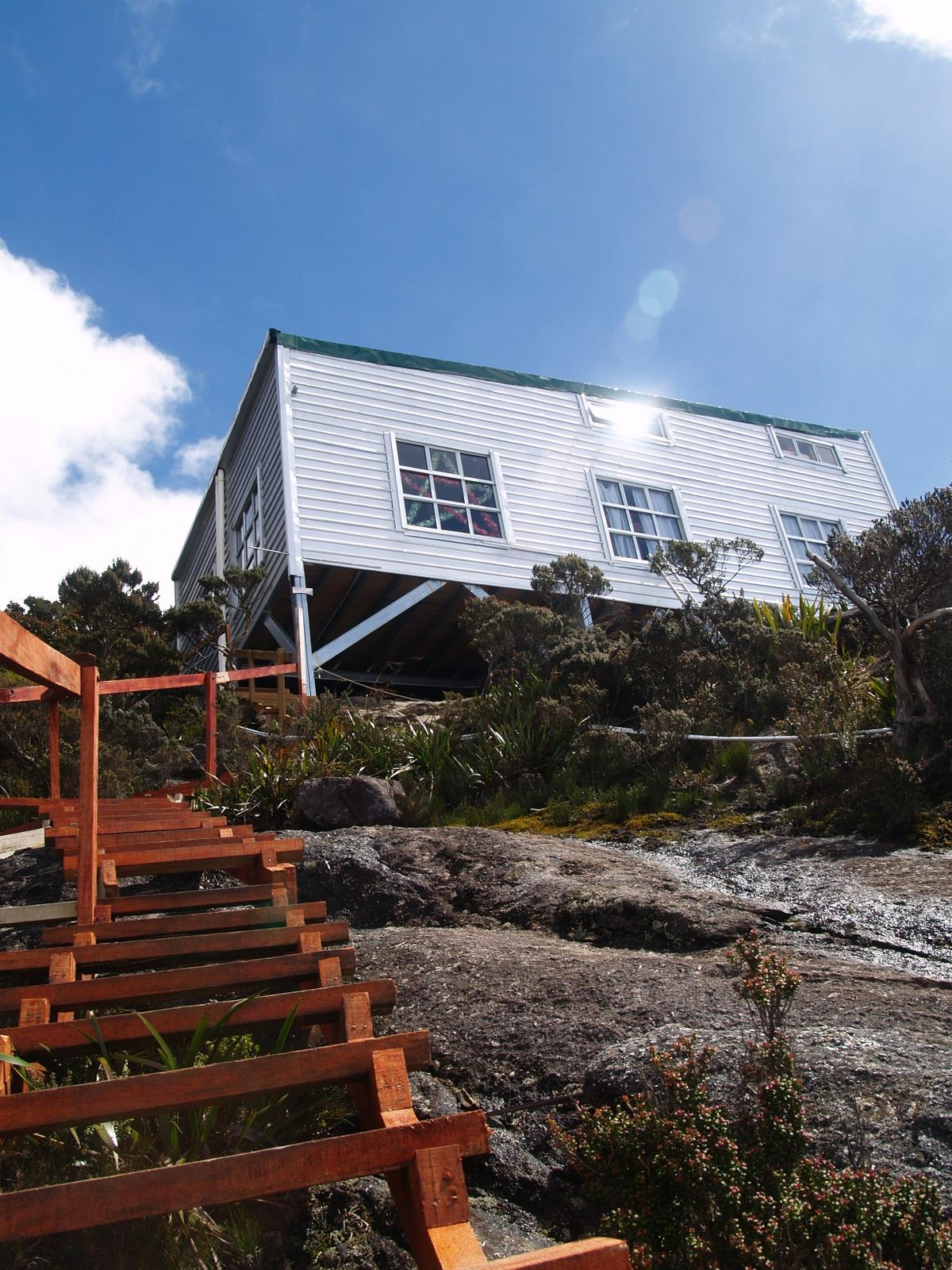
Photo of Pendant Hut from Facebook
Safety protocol of Via Ferrata routes
To ensure the safety of the climbers, Sabah Parks has taken some precautions in terms of the materials and equipment used for the Via Ferrata routes as well as the training of the Mountain Torq trainers.
The materials are CE mark-approved and the Personal Protective Equipment such as helmets, harnesses, ropes, and lanyards are certified by the International Climbing and Mountaineering Federation (UIAA) so climbers can rest their worries and be assured that they will be in safe hands.
Who are the Via Ferrata trainers?
Every group will be assigned an experienced Mountain Torq trainer who will provide a safety briefing and training on how to use the safety devices properly. The trainers have been trained rigorously based on the syllabus endorsed by the International Climbing and Mountaineering Federation (UIAA) and equipped with CPR skills and First Responder Life Support (FRLS) knowledge. They will be with the climbers throughout the whole climb to maximise the safety of the climbers and the equipment for the activities.
Can I climb without a Via Ferrata trainer?
Climbing Mount Kinabalu via Ferrata without a trainer is not permitted by Sabah Parks for safety reasons. A Mountain Torq trainer is needed to guide, supervise and assist the climbers throughout the journey, especially during the Via Ferrata activities to avoid life-threatening accidents.
Via Ferrata safety briefing at Pendant Hut and training
Via Ferrata climbers must attend pre-activity sessions which involve safety briefing and training by the trainers before their climb. The climbers will be instructed on steps to properly wear the robes and other equipment, as well as knowing how the routes will be selected. The training happens between 3:00 pm to 4:00 pm every day at Pendant Hut.
What if I miss the pre-activity safety briefing?
Climbers who fail to arrive on time for the safety briefing will be denied the ability to participate in the Via Ferrata routes. Sabah Parks will not reschedule or reimburse for the negligence of climbers.
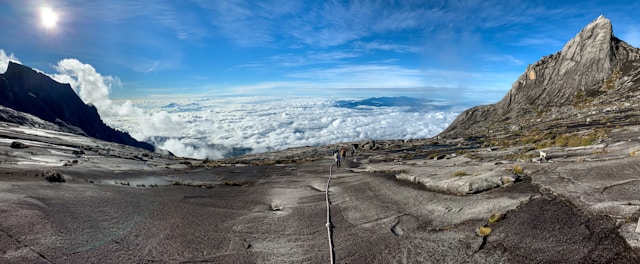
Photo by Morgan Koh on Unsplash
What should I pack for the Via Ferrata climb?
It is important to be well-prepared for your Via Ferrata climbing experience. Some of the essentials to bring include gloves with a good grip, a windbreaker, a jacket, some long sleeve shirts, long pants, sunscreen, 1.5 litres of bottled water, a waterproof backpack, some extra socks, a small towel, a beanie, a headlamp, some toiletries, some high-energy foods such as chocolates, nuts, and energy bars, medication such as a painkiller or altitude sickness tablets, a lip balm with SPF, some plasters, an insect repellent, a camera, some plastic bags, and a face mask.
Conclusion
Embarking on a Via Ferrata journey on Mount Kinabalu is an experience of a lifetime as climbers are immersed in stunning landscapes surrounding them while they enjoy the activities on their respective routes. Traversing Southeast Asia’s tallest peak unlocks a core memory in Via Ferrata participants thanks to the Tourism and Culture Ministry of Sabah offers this experience for climbers to enjoy the beautiful landscape of Borneo. The picturesque splendour of the breathtaking Mount Kinabalu scenery is truly unmatched.
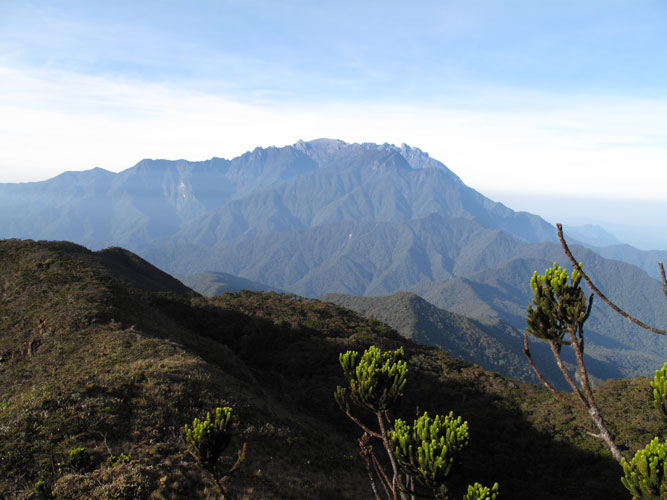
Photo by Hirosi SBM from Wikipedia
Frequently Asked Questions
What is Via Ferrata in Mount Kinabalu?
Mount Kinabalu Via Ferrata is a trail in which the rock face of the mountain is equipped with cables, ladders and rungs. The Via Ferrata consist of two routes namely the Low’s Peak Circuit and Walk The Torq to cater to beginner and intermediate climbers to embark on challenging and interesting activities besides conventional climbing.
Can a beginner hike Mount Kinabalu?
Beginner climbers can hike Mount Kinabalu as the trek is relatively easy. However, the climbers need to be physically and mentally prepared by doing some training a few months before their hike to ensure a comfortable experience.
How hard is it to climb Mount Kinabalu?
The second part of the ascent to the Mount Kinabalu summit is steep and rocky. Hence, it can be difficult for those who are not used to the challenge. It also tends to rain on the mountain which can bring about slippery or muddy grounds which can be dangerous if you are not aware. Furthermore, there will be a chance for you to experience altitude sickness as you slowly ascend to higher altitudes but this can be overcome by climbing gradually and controlling your breathing to acclimatise your body to the change of weather.
How fit do you need to be to climb Mount Kinabalu?
You do need to have an above-average fitness level to participate in the Via Ferrata activities as they require a certain amount of energy, stamina and balance for a successful and enjoyable experience.
What is the protected mountain pathway consisting of in the via Ferrata route?
The protected mountain pathway in the Via Ferrata route consists of fixed cables, ladders, rungs, and bridges embracing the rock face of the mountain plateau. They are securely anchored to the rock to ensure a safe route for climbers while climbers use safety harnesses to attach themselves to the cables for their activities.
Who can climb Mount Kinabalu Via Ferrata route?
For the Walk The Torq route, climbers who are above 10 years old and at least 130 cm in height can climb the route. Meanwhile, for the Low’s Peak Circuit, climbers who are above 17 years old and at least 130 cm in height can participate. Those who are not afraid of heights and do not have any physical disability can also participate.
Do I need any climbing experience for Mount Kinabalu Via Ferrata?
You do not need any prior climbing experience to participate in Mount Kinabalu Via Ferrata as beginner and intermediate climbers with a moderate fitness level can comfortably complete the journey with ease.

